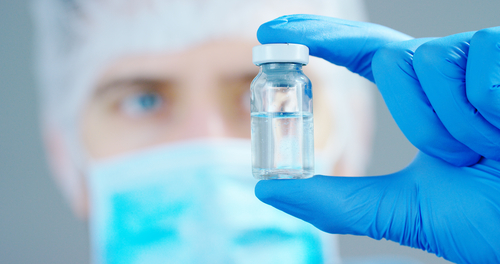
Combating diseases such as Ebola, influenza, and a host of other global catastrophic biological risks could be addressed by 15 emerging technologies, many of which are easy to use, high-tech and low cost.
In “Technologies to Address Global Catastrophic Biological Risks,” the report issued this month by the Center for Health Security at the Johns Hopkins Bloomberg School of Public Health, researchers suggest that these technologies are an important component for safeguarding the planet from a devastating biological event. This is especially true, the report says, when international financing has often lagged in the purchase and dissemination of diagnostic tools.
“The U.S. government is providing more funding for middle-stage development of drugs and vaccines, but I don’t think we’re there yet with diagnostics,” said Crystal Watson, senior scholar and assistant professor at the school and the report’s lead author.
Watson said the 15 technologies she and her team have identified—most of which are geared toward disease detection—are inexpensive enough for governments to be attracted to invest in them. For instance, paper-based microfluid devices, which are lined with cells, reagents, and antibodies, or other diagnostic methods, could replace typical laboratory testing in some settings and make diagnosing infectious diseases in the field commonplace. These microfluid devices cost a few cents each.
The researchers recommend the creation of an international consortium of experts to gauge where trends in technology can be practically applied to the prevention of infectious diseases.
“In order to develop these products, we need more intentionality and new organizations constantly scanning the horizons to find technologies that can be useful at scale,” said Matthew Watson, a senior analyst and research associate who worked on the report.
Microarray patches for vaccine administration is one technology that would be ‘useful at scale.’ The patch is held against the skin by an adhesive bandage and “comprised of an array of small, water soluble thermostable cones that are embedded with the antigen of choice,” according to the report. The pain-free, self-administered way of delivering the vaccine into the skin may be the only means to quickly vaccinate a large group of people. However, the patches are not on the market yet.
Overall, the technologies fall under five categories of innovation including technologies such as self-spreading vaccines, ingestible bacteria for vaccination, and 3D printed chemicals. The team of researchers conducted an extensive literature review and interviewed more than 50 experts to compile their list.
The report also highlights implementing IT, wearables, and drones that could have a transformative effect on mitigating disease spread.
Drones are discussed extensively in the report, particularly in their application for monitoring agricultural pathogens. Drones can be fitted with autonomous sample collection and analysis technologies such as real-time polymerase chain reaction (PCR) and sequencing platforms. This creates the ability to test samples on or near the location in which the sample was gathered, rather than requiring a laboratory to process it. Drones also provide the opportunity to surveil if, or when, there is the release of an aerosol or biological agent into an ecosystem. Despite these capabilities, there is currently no comprehensive plan in the United States or globally to provide this kind of far-reaching environmental surveillance.
“Investing in pandemic preparedness always takes a strong partnership with the private sector,” Crystal Watson said. “But you need some kind of pull in the public sector.”
The report was supported by funding from the Open Philanthropy Project.




